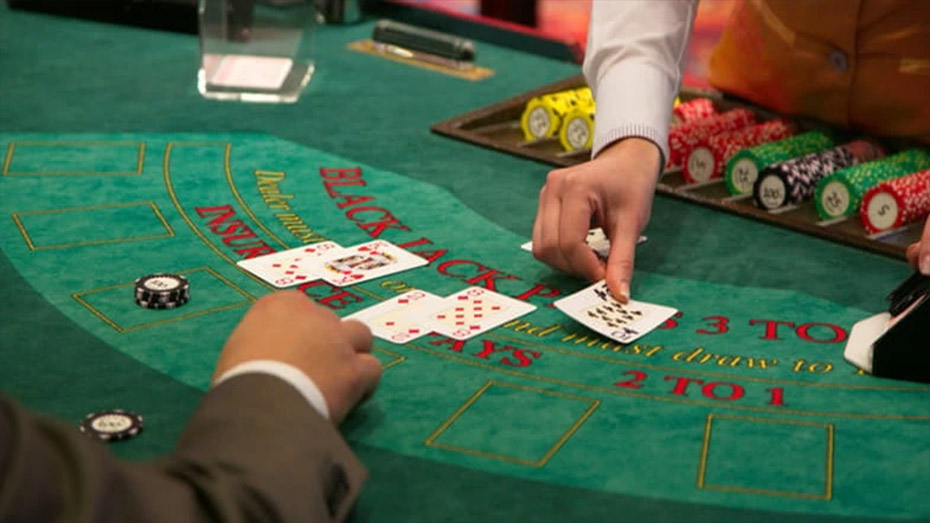All-In at Lodigame: Live Poker Comprehensive Guide
Welcome to the world of Lodigame Live Poker, where the thrill of the casino meets the strategic finesse of a timeless card game. Whether you’re a seasoned pro looking to hone your skills or a newcomer eager to learn the ropes, this comprehensive guide is your ticket to success at the poker table. From understanding the basics to mastering advanced strategies, we’ll take you on a journey through the fascinating realm of Live Poker.
The Basics of Live Poker
Live Poker is a captivating card game in an online casino that combines skill, strategy, psychology, and a bit of luck. Whether you’re a newcomer or a seasoned player, understanding the core elements of Live Poker is crucial to enjoying and succeeding in the game.

The Deck
Live Poker is typically played with a standard deck of 52 cards. The playing cards are categorized into four distinct suits: hearts, diamonds, clubs, and spades. Each suit contains 13 ranks, from Ace (the highest) to 2 (the lowest).
The Objective
The primary goal in Live Poker is to win chips or money from other players. This is achieved in two ways: either by having the best hand at showdown (revealing your cards) or by convincing your opponents to fold (discard their hands).
Poker Hands
Poker hands are ranked based on their strength. The basic hand rankings, from highest to lowest, are as follows:
- Royal Flush: Ace, King, Queen, Jack, and 10, all belonging to the identical suit.
- Straight Flush: Five consecutive cards of the same suit (e.g., 9, 8, 7, 6, 5 of hearts).
- Four of a Kind: A collection of four cards sharing the same rank, such as four 7s.
- Full House: A hand comprising three cards of one rank and two cards of another rank, like three Kings and two Queens.
- Flush: Five cards of the same suit, not in sequence (e.g., 2, 6, 8, 9, Q of clubs).
- Straight: Five consecutive cards of different suits (e.g., 10, 9, 8, 7, 6).
- Three of a Kind: A set comprising three cards with an identical rank, for instance, three Jacks.
- Two Pair: Two sets of pairs (e.g., two 10s and two 4s).
- One Pair: A pair of cards sharing the same rank, like two Queens.
- High Card: When no other hand is made, the highest card in your hand determines your rank (e.g., an Ace-high).
Betting Rounds
- Pre-flop: Players are dealt two private cards (hole cards), and the first round of betting begins.
- Flop: Three community cards are dealt face-up on the “board,” and another round of betting occurs.
- Turn: A fourth community card is revealed, followed by another round of betting.
- River: The fifth and final community card is revealed, and the final round of betting takes place.
- Showdown: If there are two or more players remaining after the final round of betting, they reveal their hole cards, and the player with the best hand wins the pot.
Essential Live Poker Skills
To succeed in Live Poker, you need to develop a set of fundamental skills that go beyond knowing the rules. These skills will not only improve your game but also give you an edge over your opponents.

Reading Opponents: Body Language and Tells
Pay attention to your opponents at the table. Observe their actions, behaviors, and body language for clues about their hand strength and intentions. Be aware of your own table image – the perception other players have of you – and use it strategically to your advantage. Employ subtle misdirection tactics to deceive opponents and create false tells.
Calculating Odds and Pot Odds
Develop the ability to calculate the odds of completing your hand or improving it on future community card rounds. Understand pot odds, which help you decide whether to call a bet based on the size of the pot and the cost of the call. Consider implied odds, which factor in potential future bets to determine if a call is profitable in the long run. Learn to evaluate your hand’s equity, which represents the portion of the pot you can expect to win over multiple hands.
Bankroll Management Strategies
Determine an appropriate bankroll size based on the stakes you play and your risk tolerance. Your bankroll should be sufficient to withstand inevitable losses. Choose the right stakes to match your bankroll size and skill level. Avoid playing in games where you’re under-rolled. Implement risk management strategies, such as setting loss limits and stop-losses, to protect your bankroll from severe downturns. Set realistic winning and losing goals for each poker session to maintain discipline.
Popular Live Poker Variations
Live Poker offers a diverse range of poker variants, each with its own unique rules, strategies, and dynamics. Whether you prefer the simplicity of Texas Hold’em or the complexity of mixed games, there’s a poker variant to suit your preferences.

Texas Hold’em: The King of Poker
Texas Hold’em is the most widely played poker variant in the world. It’s known for its simplicity and strategic depth. Each player is dealt two private cards (hole cards), and five community cards are placed face-up on the board. Participants utilize a blend of their concealed cards and the communal cards to assemble the most favorable hand achievable.
In Texas Hold’em, there are four distinct betting rounds: the pre-flop, flop, turn, and river. Texas Hold’em emphasizes position, hand selection, and bluffing. This game is beloved by both novices and experts alike.
Omaha: High and Low Variants
Omaha is similar to Texas Hold’em but with a key difference – players are dealt four hole cards instead of two. The player with the best high hand (using two hole cards and three community cards) wins the pot.
In this variant, the pot is split between the best high hand and the best low hand, provided the low hand meets specific criteria (typically, no card higher than 8). Omaha follows the same four-betting round structure as Texas Hold’em. Hand selection is crucial in Omaha, and players must carefully consider the potential for both high and low hands.
Seven-Card Stud: Classic Poker Game
Seven-Card Stud is one of the oldest poker variants, known for its unique dealing and betting structure. Players receive seven cards, three face-down (hole cards) and four face-up (door cards). The goal is to make the best five-card hand from these seven cards.
Seven-Card Stud features multiple betting rounds, with each round initiated by the player showing the highest-ranked face-up card. Stud poker requires strong memory and card counting skills, as you can see some of your opponents’ cards.
Other Variations and Mixed Games
- Mixed Games: Mixed games, such as H.O.R.S.E. (a rotation of Hold’em, Omaha, Razz, Seven-Card Stud, and Eight or Better), challenge players with a variety of poker variants, testing their versatility.
- Razz: In Razz, the lowest five-card hand wins the pot. Aces are low, and straights and flushes don’t count against the hand.
- Triple Draw: Triple Draw is a lowball game where players aim for the lowest hand with three draws to improve their cards.
- Pineapple: A variation of Texas Hold’em where players receive three hole cards and must discard one after the flop.
- Chinese Poker: A game where players receive 13 cards and must arrange them into three poker hands – two five-card hands (high and middle) and one three-card hand (low).
Live Poker Strategy
Developing a solid poker strategy is essential for success in Live Poker. While luck plays a role in the short term, skill and strategy prevail over the long haul. Here’s an overview of key strategies to help you become a formidable poker player.

Starting Hand Selection
Understand the value of premium starting hands like high pairs (e.g., Aces, Kings) and high cards of the same suit (e.g., Ace-King suited). These particular hands carry a greater likelihood of securing a victory. Recognize the significance of your position at the table. Play tighter (selectively) from early positions and more aggressively from late positions. Adapt your starting hand range based on the table’s playing style. Play tighter in loose games and looser in tight games.
Pre-flop, Flop, Turn, and River Play
Make calculated decisions about raising, calling, or folding based on your starting hand strength, position, and opponents’ tendencies. Avoid chasing marginal hands. Assess the community cards and determine whether your hand improved. Consider continuation betting if you were the pre-flop aggressor and the flop favors your hand. Reevaluate your hand’s strength on the turn. Consider your opponent’s likely range and adjust your betting accordingly. The final community card can dramatically change the hand’s outcome. Think carefully before making a river bet or call.
Bluffing and Semi-Bluffing Techniques
Bluffing involves representing a stronger hand than you actually have to induce opponents to fold. Bluff selectively and consider the likelihood that your opponent will fold. Semi-bluffing is when you have a drawing hand that can improve on later streets. It combines the potential for both a strong hand and a bluff.
Post-flop Strategy: Bet Sizing and Position
Learn to use proper bet sizing to manipulate the pot’s size and control the action. Over-betting, under-betting, and making value bets are all strategic tools. Exploit your position by acting last on most betting rounds. This allows you to gather information from opponents’ actions before making decisions.
FAQs
Conclusion
In conclusion, Live Poker is a captivating blend of skill, strategy, and psychology that offers endless excitement at the casino table. With a solid understanding of the basics, essential skills, and strategic insights, players can embark on a rewarding journey in the world of Live Poker, mastering the art of this timeless card game and competing successfully against opponents. Whether you’re a novice seeking to learn the ropes or a seasoned pro aiming to refine your skills, this comprehensive guide serves as your valuable ticket to success in Live Poker.











